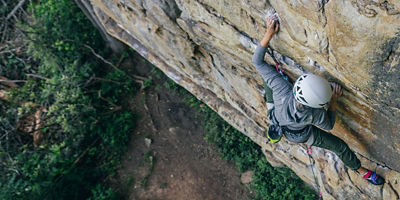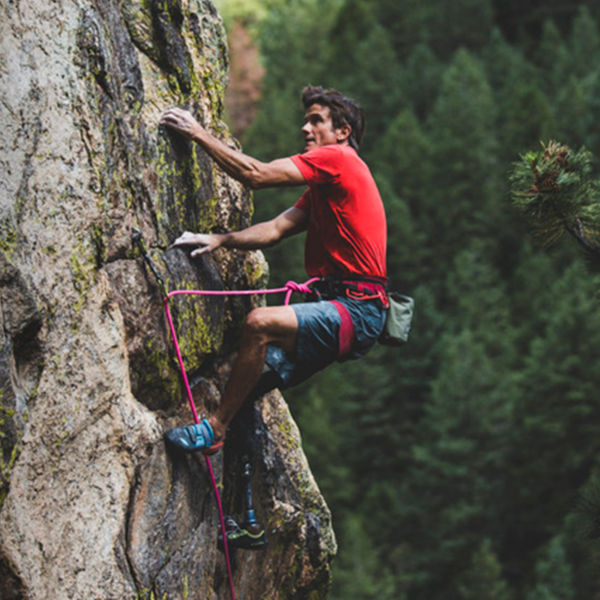
At first, it is. You’re cruising, latching one hold after another without breaking a sweat. But halfway up, you start to slow. Your forearms are burning. Your elbows begin to wing desperately upward. The moves aren’t getting any harder—and you climb this grade in the gym all the time—but you’re running out of gas. Your fingers are peeling open and no hold feels good enough to pause on. By the three-quarter mark, you can see the anchors but you just can’t hold on anymore: Your tank is empty.
Sound familiar? You could be dealing with a case of poor local endurance.
Types of Muscular Endurance
Sports researchers talk about several different types of endurance, but the types you’ll hear about most in climbing are “local endurance” and “power endurance.” Power endurance is the ability to execute many big, demanding moves in a row. Local endurance is the ability to keep going at a moderate level of difficulty without getting tired. It means that when you encounter a big hold or a section of moderate climbing in the middle of a route, your body will be able to rest and recover. By the time you get to the next crux, you’ll have the energy to power through.
What is ARC Training?
Local endurance is one of the fundamental building blocks to address when you first start climbing or after you’ve taken a long break. One of the best ways to build it is by ARC training.
ARC stands for Aerobic, Respiration, and Capillarity. In other words, ARC training should improve your aerobic fitness, strengthen your respiratory system, and increase the spread of your forearm capillaries (the tiny blood vessels that deliver oxygen to your muscles). The result: better efficiency on the wall, less forearm burning, and more time before fatigue.
You might think you’re training endurance when you spend two hours at the climbing gym and tick off a bunch of routes or boulders. But the walls of most gyms are shorter than what you’ll find outside, and every time you sit back to lower, you’re taking a significant rest. Because of those rests, taking turns at the gym is more of an interval workout than an endurance workout, no matter how long you’re there. It’s like doing sprints, whereas ARC training is like going for a 2- to 5-mile jog. Like running, ARCing may feel difficult at first, especially if you haven’t been doing much endurance training. The good news: It will become much easier over time.























